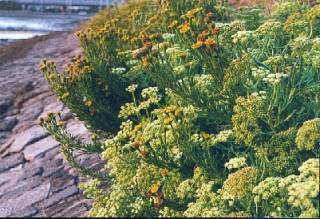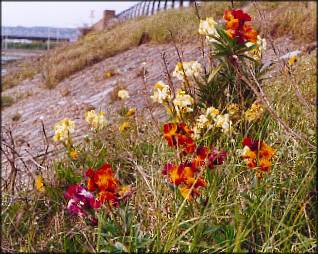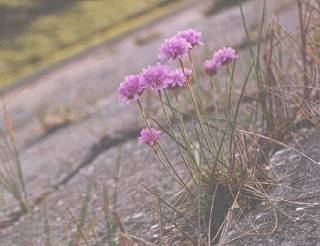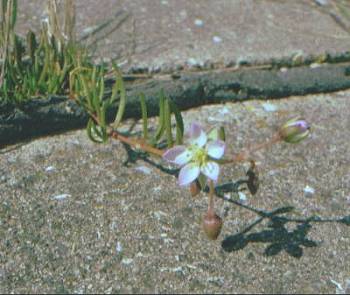
 |
Rock Samphire in the foreground, and Golden Samphire behind, grow together near the top of Eastern Road. |
| True to their name, these Wallflowers grow on the defences near to the samphires. |  |
 |
One plant of Thrift was found on the defences West of Farlington Marshes Reserve, at the upper limit of Broom Channel. |
| Nearby is this Greater Sea Spurrey. |  |